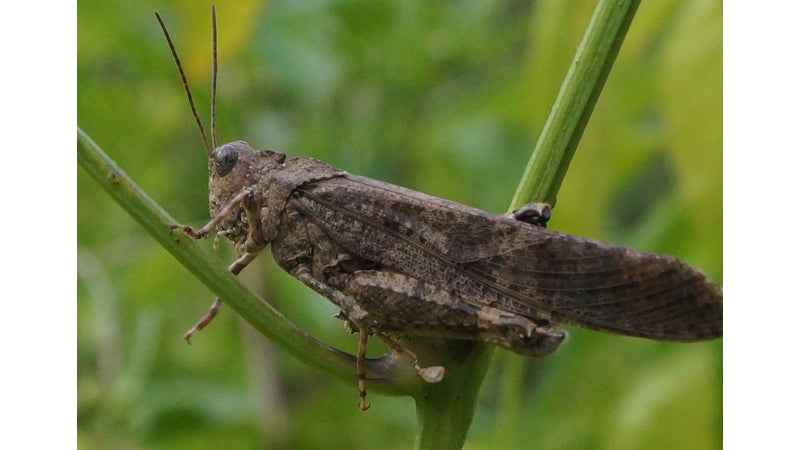Fall is a great time to observe insects
Published 6:00 am Thursday, December 2, 2021

- Fall is a good time to catch a glimpse of the short-horned grasshopper. (Photo submitted)
|
Getting your Trinity Audio player ready...
|
By Stella Payne
Virginia Master Naturalist
Fall is a favorite season of the year. Cooler weather to work outside. It is also one of the better times to observe insects.
One flower that is abundant with insects in the fall is the goldenrod. Many common insects are attracted to the large amounts of pollen and nectar that these plants offer. On a sunny day you will be able to watch honeybees, long-horned beetles and soldier beetles. Just to mention a few. Also, the camouflaged ambush bug will sit and wait to catch and feed on visiting insects. Keep your eyes open too for the odd monarch butterfly gliding away.
As you walk a road or path look out for Woolly bear Caterpillars who are searching for an overwintering site. Walk beneath an oak tree and pick up some acorns. Look for holes in them. You may discover the work of acorn weevils. At the tip of tree branches, you may see masses of webbing enclosing the leaves. These are the nets of fall webworms.
Most importantly, at this time of year, stop to listen to the sounds of crickets and grasshoppers. Their sounds are easy to hear and easy to take for granted to the point we relegate their calls to back-ground noise. The easiest way to listen to grasshoppers and crickets is in areas of dense vegetation. They like to feed on plant matter. Crickets are a family (Gryllidae) of insects in the order Orthoptera. Grasshoppers is a general term applied to several families in the order Orthoptera. All members of this order have two pairs of wings.
The life cycle of crickets and grasshoppers are similar. Most overwinter in the egg stage. Nymphs hatch from late spring to late summer. Many grasshoppers lay small packets of 10 to 20 eggs in the soil. Crickets tend to lay their eggs singly, either in the soil or inserted into plant stems. The highlight of the life cycle is the adult phase when the air is filled with their musical sounds. Most of the sounds we hear are usually made by the males to attract a female. However, these calls can have other functions. They can be “aggressive calls” between males to get each other to move apart or they can be “alarm calls” to cause all insects in the area to stop calling for protection from predators.
Grasshoppers and crickets have very different styles of making sounds and of mating behavior. These two aspects can be fun to learn about and easy to observe. I challenge you to take in the Fall sounds and not to forget our helpful insects as they seek out their winter retreats.





